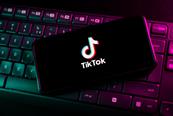

Brand
-
Established
2004
-
Number of staff
12,600
-
Head office
Menlo Park, CA, USA
-
Sector
Social media
LATEST
About Facebook
While Facebook co-founder and CEO Mark Zuckerberg may have dismissed the 2010 film about his earlier life, The Social Network, as overly glamourised, “hurtful” and inaccurate, what cannot be denied is the entrepreneur’s obsessive focus and commitment to making the platform a success.
His tenacity has taken the social network from a website serving initially just Harvard students, then Ivy League students, then 800 college networks, to one that now boasts more than 1bn daily active users, with 83.6% of these outside the US and Canada (according to Facebook, as at December 2015).
Looking back to Facebook’s launch in 2004, Zuckerberg’s initial ambitions focused on the student world must now seem rather parochial to him. He has adjusted its corporate mission accordingly; to “give people the power to share and make the world more open and connected”.
Alongside this rapid growth, Facebook has continued to update and advance its platform. In 2006, it launched Facebook for Mobile, introduced the first version of the Facebook API and launched its news feed and mini-feed functions.
Hot on the heels of these innovations were Facebook Video (2007), Facebook Chat (2008), Facebook Connect (2008) and the, now ubiquitous, ‘like’ button (2009).
Further boosting Facebook’s pace of growth have been the main acquisitions along the way: Instagram (2012), Atlas (2013), WhatsApp (2014 – its $19bn price tag was the most ever paid for a start-up backed by venture capitalists) and Occulus (2014).
Driving revenue, though, has always been a thorny issue for the social platform; reportedly being the reason the company hired its chief operating officer Sheryl Sandberg in 2008, a former vice-president of global online sales and operations at Google, chief of staff for the United States Treasury Department under President Clinton and an economist/management consultant by training.
Since Sandberg’s appointment, there have been tweaks to the advertising model, and a year after she joined (by September 2009), Facebook started making a profit. On 1 February 2012, Facebook was publicly floated.
Facebook defines itself by its agile “hacker culture”, pledging to put creative problem-solving and quick decision-making at the heart of its business model. Mantras such as “move fast and break things” and “this journey is 1% finished” are displayed on its office walls to fuel this culture and have become part of ad industry folklore, much quoted in PowerPoint presentations.
Despite the overwhelming success of the platform, some experts predict storms on the horizon – they believe, for instance, that the major, model-threatening challenge for Facebook is remaining relevant, particularly to the younger generations. Ironically, while Facebook has caught the advertising eye (and dollars) for its impressive size, it is exactly this size that is now putting off some of the more discerning millennials from the network.
Nevertheless, as Facebook’s vice-president, EMEA, Nicola Mendelsohn, pointed out in a 2016 predictions piece for Marketing, it will plough on with its aggressive growth strategy. With 1bn users under its belt, the goal for this year has been to start connecting the next 1bn Facebookers worldwide.
BUSINESS DETAILS
1 Hacker Way, Menlo Park, CA 94025, United States
www.facebook.com
KEY PEOPLE
Gary Briggs, vice-president, CMO
Rebecca Van Dyck, vice-president, marketing
Carolyn Everson, vice-president, global marketing solutions
Nicola Mendelsohn vice-president, EMEA
Philippa Snare EMEA marketing group







